Tactical backpack for outdoors – everything you need at a glance
Humans belong in nature – this is especially true in an age that is arguably more characterized by modern technology and fast-paced life than ever before. The more we move towards virtual reality, artificial intelligence and other digital innovations, the louder the call of nature becomes in some of us.
However, even our ancestors in prehistoric times were aware that they should not face the challenges of nature unprepared. Whether it was weapons, prehistoric transport bags made of sabre-tooth or mammoth leather, or other tools – an unprepared trip on a hunting or gathering trip could quickly become life-threatening.
That brings us to one of the advantages of our modern technology, which has of course also developed in the manufacture of transportation options – the days when we had to hunt down mammoths and sabre-toothed tigers to make a handy bag for the road are over, thank goodness!
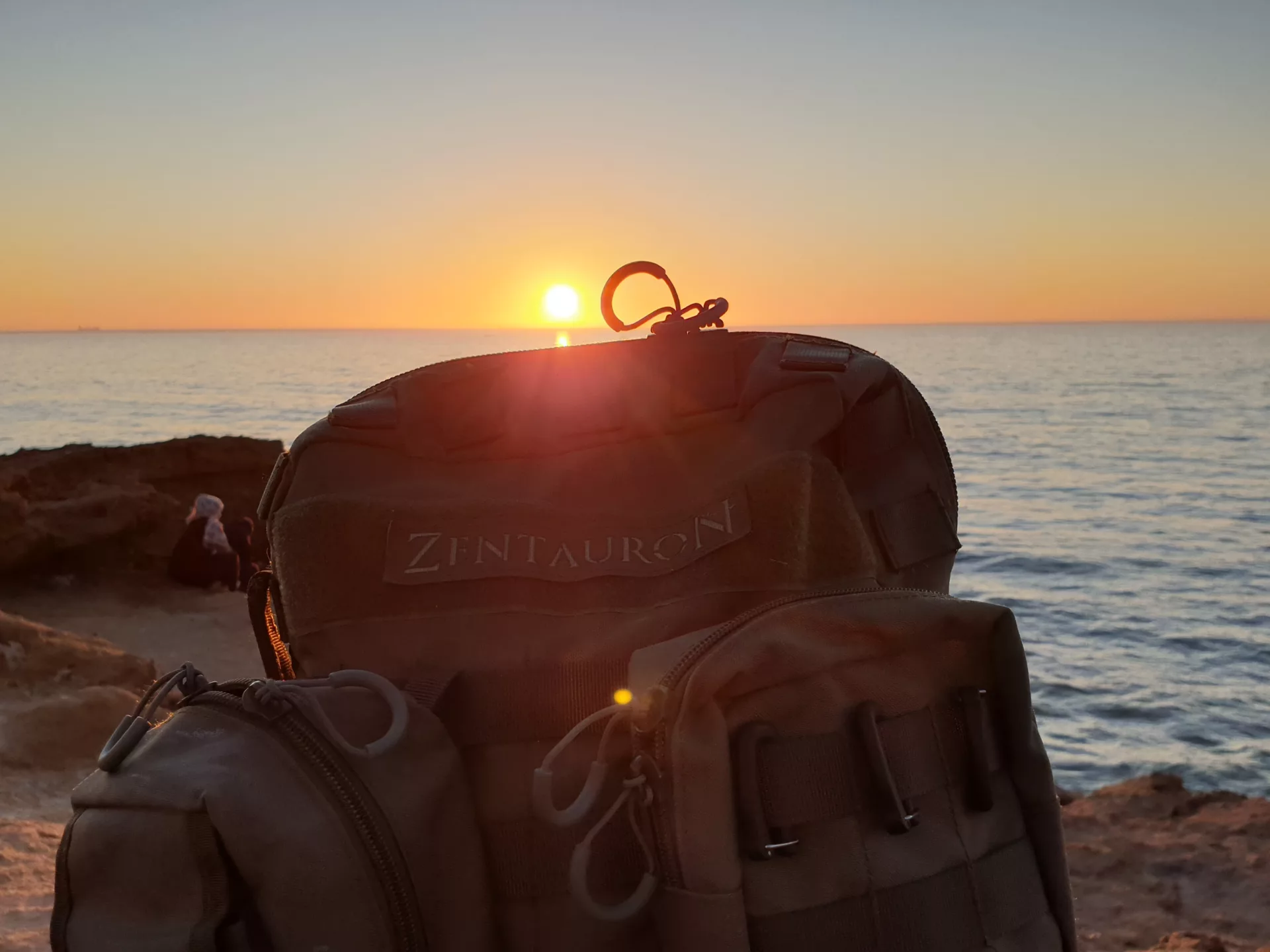
What you need to look out for
So nature is calling you too and you’re ready for your next outdoor adventure. Whether you’re gearing up for a hike, a hunt, a camping trip or perhaps an extraordinary expedition, you want to carry a reliable backpack with you. Good decision, and we’ll tell you what’s important!
If you want to buy a tactical backpack, pay attention to the following points:
- Capacity and construction
- comfort
- Flexibility
- Color scheme / exterior
- Resistance
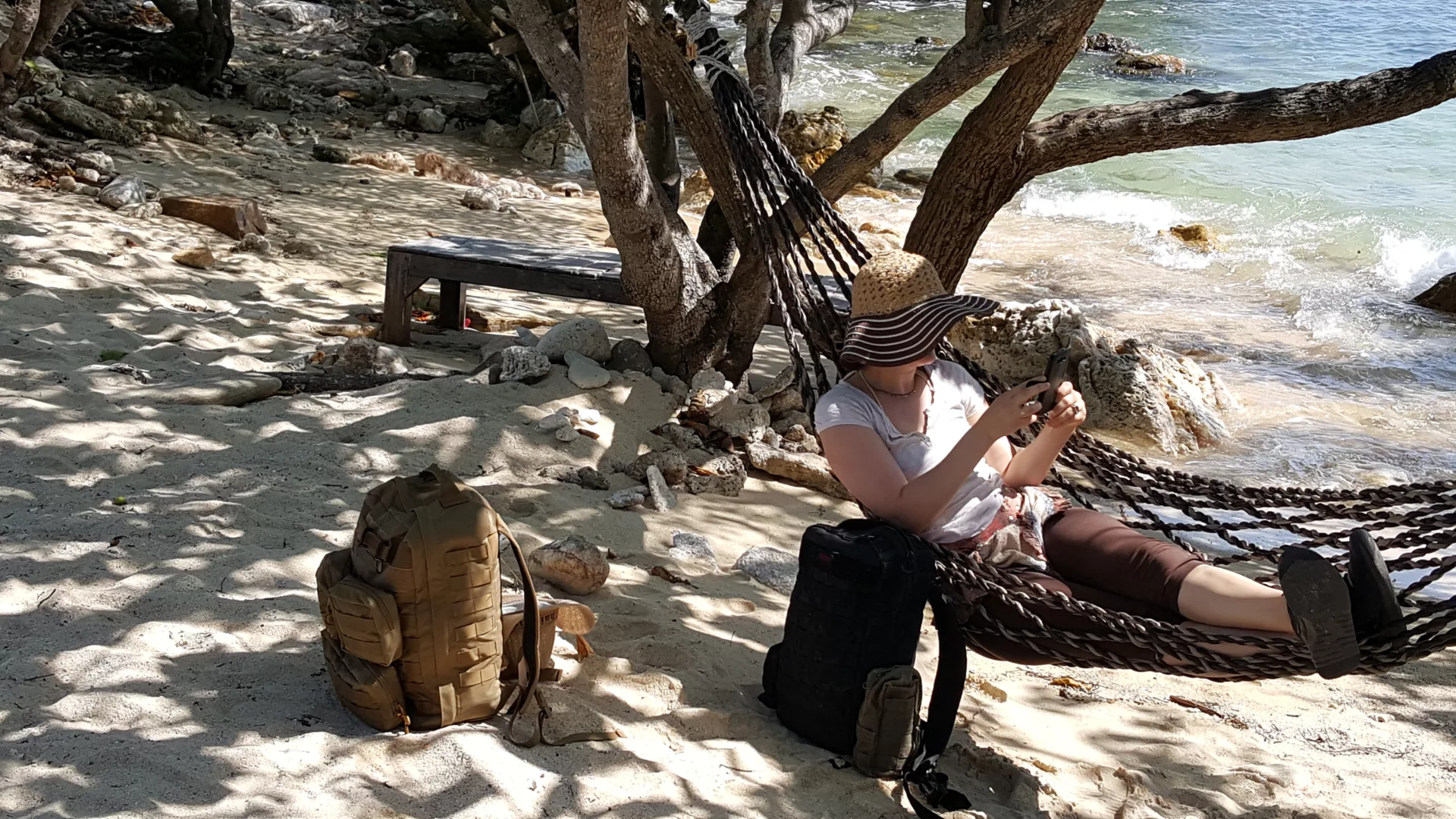
Capacity
You will be aware that the capacity of your rucksack is crucial to the success of your outdoor adventures. It determines how much equipment and provisions you can carry without overloading yourself or restricting your mobility.
Remember: a rucksack should be big enough to hold everything you need, but not so big that it becomes an unwieldy monster that hinders you more than it helps you!
For day trips, a compact backpack with a volume of 8 to 13 liters, such as our Hydra storm luggage or the Sprinter daypack, is often sufficient. These models offer enough space for water, snacks, water protection and a first aid kit (which you should always have with you at all times). You can stow smaller tools in side pockets or in your clothing.
However, if you are planning multi-day hikes, survival tours or real expeditions, you will need to bring out the big guns. This is because equipment such as a tent, sleeping bag, cooking equipment and often a lot more is required. The amount of spare clothing is also usually larger. We recommend investing in a model with a capacity of 50 liters or more, such as our Sentinel 55 +10 liter backpack or combat backpack M.A.R.S. SET.
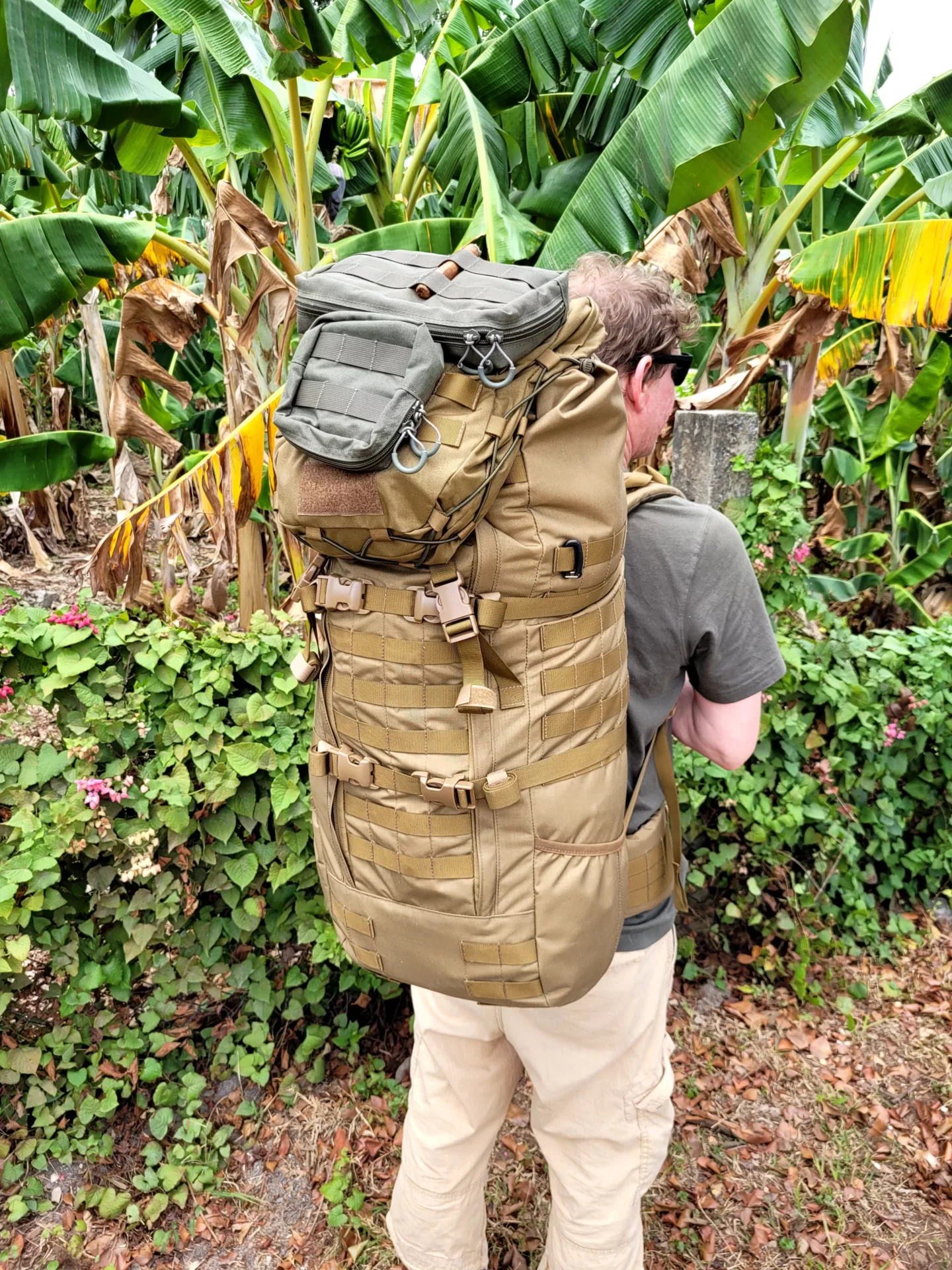
Construction
A well-constructed tactical rucksack combines robustness with clever design. Clever here means, above all, even distribution – even when fully loaded. If you are moving through unpleasant terrain or using the “gliding” mode of movement popular in the Bundeswehr, an even distribution of the load carried is worth its weight in gold!
Pay attention not only to the nominal capacity of the rucksack, but also to additional pockets or fastening options on the outside to attach equipment such as sleeping bags or sleeping mats without taking up too much space on the inside.
Remember: The best capacity won’t help you if you pack the wrong things – use the available space as efficiently as possible!
Comfort
Sure, we’re all tough dogs, and comfort is for wimps – after all, we’re out in the unforgiving wilderness for a reason, right? Wrong! The comfort of a tactical rucksack is no less important than its capacity. Even the roomiest backpack for hunting can be a pain if it doesn’t fit properly.
A comfortable rucksack often makes the difference between a pleasant outdoor tour and an arduous ordeal, just ask Bundeswehr soldiers.
Ergonomically shaped carrying straps that are padded and wide enough to distribute the pressure evenly over your shoulders are key to comfort. If you take a look at the combat backpack M.A.R.S, which was made for specialized infantry soldiers, you will notice particularly wide carrying straps. Logical – because the thinner the shoulder strap, the greater the risk of it cutting in, especially when moving or in difficult terrain.
The back section of the rucksack is at least as important. Sturdy but breathable back padding promotes air circulation and thus minimizes perspiration – this is particularly helpful for long hikes, marches or hunting, especially in warm climates.
A carrying system with an external frame, such as our Sentinel 55, also allows the load to be transferred from the shoulders to the hips. A good hip belt distributes the weight evenly and reduces the strain on the back.
Last but not least, you should make sure that the backpack offers good overall balance. A backpack that tends to pull backwards or whose weight is unevenly distributed can change your center of gravity and cause you to tire more quickly.
Flexibility
Flexibility means adaptability, and adaptability increases the likelihood that your plans – whether hunting, hiking or trekking – will succeed.
A very important aspect of flexibility is modularity – basically the “division” of your backpack into several “parts”.
Sounds like Lego to you? Let us explain it in more detail using our combat backpack M.A.R.S. SET: The M.A.R.S has a divided main compartment that offers space for the supplied back reinforcement. In front of this compartment is another compartment that can hold heavy items, as you can securely brace them against the plastic plate.
There are also two openings in the lid for cables, antennas or hoses. You can store small items that you need to access quickly in the internal mesh compartment – even when the backpack is full.
A flexible rucksack that supports you on the hunt, in the field or on a hike must meet your plans and needs.
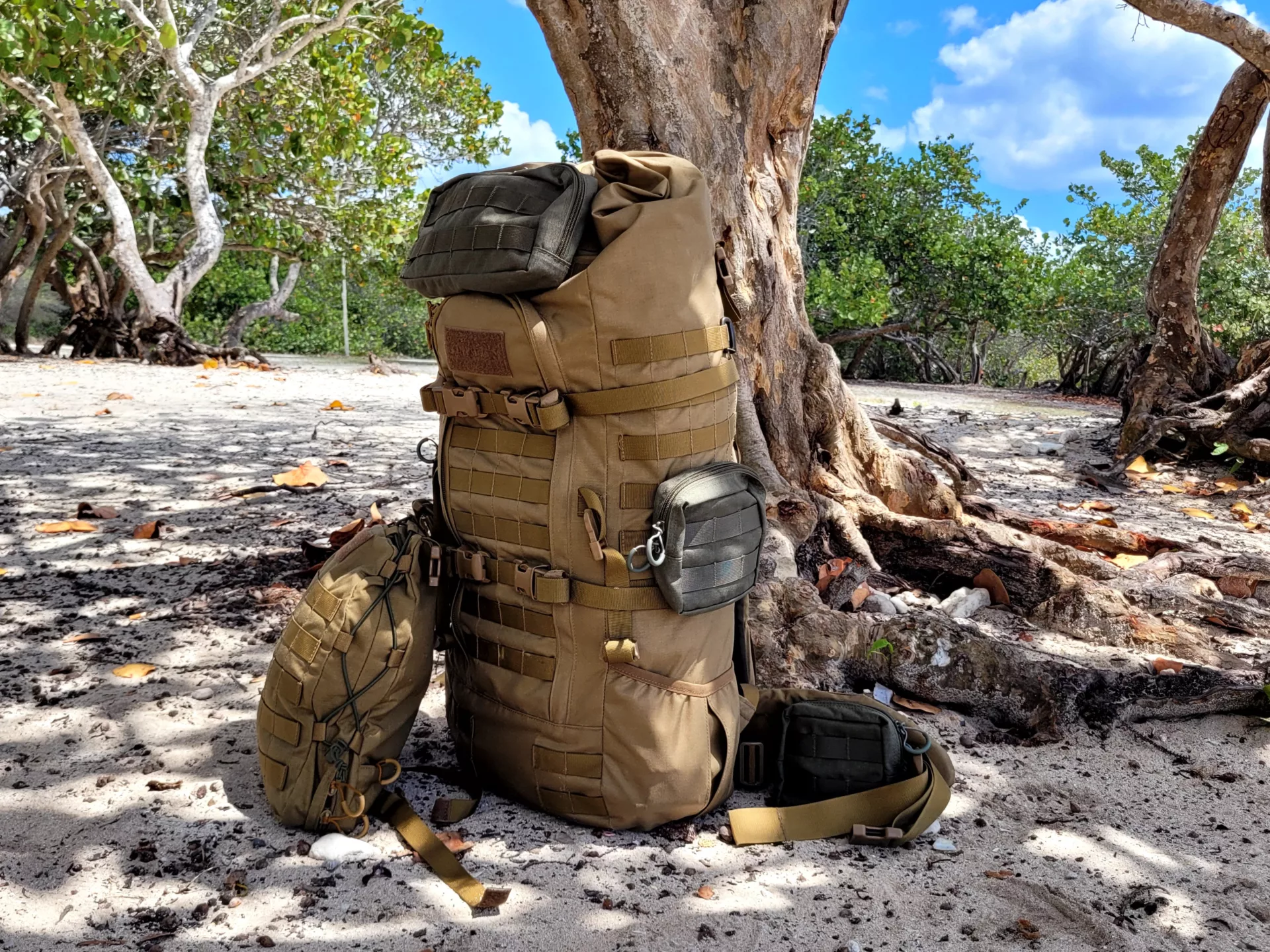
Coloring / Exterior
Perhaps you are of the opinion that the color scheme and outer appearance of your tactical backpack are purely a matter of taste. You would be right if you deleted the little word “tactical”. In this sense, tactical can be roughly translated as “adapted to the task”. We would also like to explain this to you using two examples whose purpose could not be more different.
Take another look at the combat backpack M.A.R.S and contrast it with the Medic Rescue Pack HVO. As you can see, the design is very similar! However, the two models differ significantly in one factor, namely their color scheme!
The Medic Rescue Pack HVO is available in the clear, distinct colors red and blue and is also equipped with reflectors. Logically, it is a rucksack for paramedics – they want to be particularly conspicuous and visible. The color therefore serves its purpose!
The combat backpack M.A.R.S, on the other hand, is also available in different colors, but these are very natural tones that can also be found in nature and / or camouflage patterns, such as the typical Bundeswehr Flecktarn or Multicam. This color scheme is therefore more likely to help you blend in or blend in with your surroundings.
Remember: Match the color scheme of your tactical backpack to your purpose!
Resilience
At the heart of all outdoor and military equipment lies the irrefutable requirement for robustness and durability. After all, with a tactical rucksack we are mainly out and about in the field, not in the gym (at least that’s the assumption).
A backpack that threatens to break on every second trip into the wild can have many names, but “tactical” is certainly not one of them. Resistance depends largely on the fabric used, as you may have noticed with some of our rucksacks.
“Cordura” is a term that you have probably already read in numerous product descriptions – definitely, because it is precisely this material that gives many Zentauron products their durability, including our tactical backpacks. Cordura is a high-tech fabric that has been developed to withstand even the toughest environmental conditions and the most intensive physical stresses.
As you can see, in addition to a stable structure or framework, the material of a tactical rucksack must be able to withstand a lot – pay particular attention to this when buying!
Packing your rucksack correctly
Packing a tactical rucksack correctly is an art in itself, as any army soldier, hunter or outdoor adventurer can tell you. A well-packed rucksack distributes the weight evenly, improves your balance and prevents uncomfortable pressure points.
Keep the following in mind when packing:
- The weight distribution
- The correct order
- Efficient use of compartments and pockets
- Compression
- Outer surfaces
- Checking and fitting
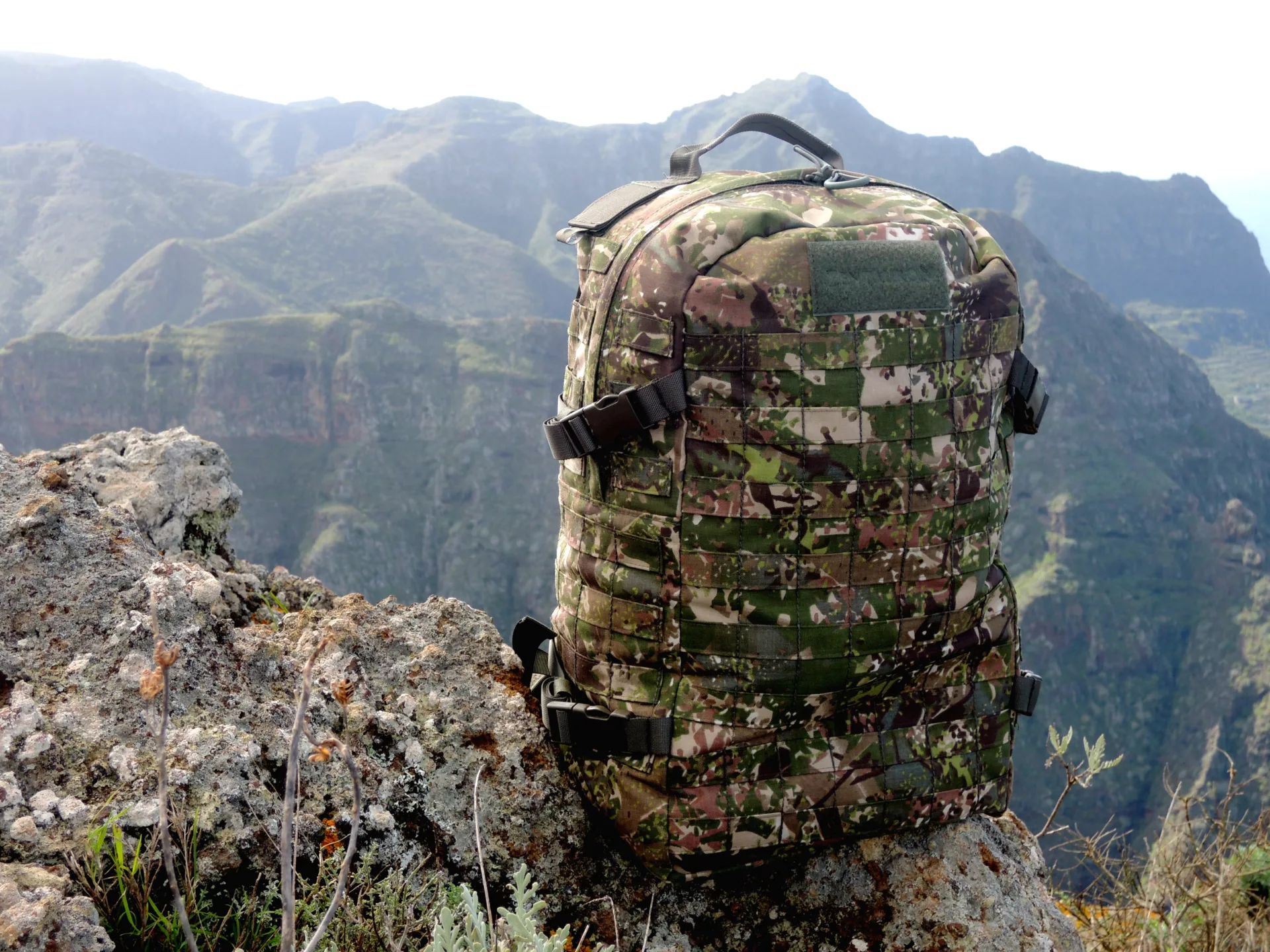
The weight distribution
Place heavy items as close to your back and in the middle of the backpack as possible. This optimizes your centre of gravity and makes it easier to carry. Lighter items are best stowed on the outside and higher up.
The right order
Start with heavy items that you don’t need suddenly and urgently at the bottom of the rucksack. This includes a cooking set or the tent fly, for example. In the middle, pack heavier items of equipment that you will need more frequently but not immediately, such as food and water supplies. At the top and easily accessible should be all items that you need quickly and regularly, such as rainwear, snacks or a first aid kit.
Efficient use of compartments and pockets
Use the compartments and pockets in your rucksack to keep things tidy! There are few things worse in the wilderness than rummaging around haphazardly and clumsily in your rucksack in an emergency situation without finding what you’re looking for.
Small items such as keys, compass, flashlight or other survival kits should be packed in the top or side pockets. Anything you can easily lose but can’t afford to lose should be stowed there!
If required, you can of course also equip your tactical rucksack with additional pockets, such as our Small, Medium or Large backpack inner pocket. Or you can divide the usable area with the 3210 interior divider, depending on your preference and intention. For maximum efficiency, you can also use U-Clip equipment connectors – so you can actually use every centimeter of the available space!
Compression
Many backpacks have compression straps that serve to reduce the volume of the backpack and stabilize the load. Use equipment such as backpack straps to tighten the contents once you have finished packing. This prevents the items in the backpack from shifting – which can happen more easily than you might think when you’re on the move.
Exterior surfaces
Some items of equipment simply don’t fit in the rucksack itself. Sleeping bags, sleeping mats or trekking poles often have to be attached outside. Use the attachment points provided on the outside of the rucksack and, if necessary, use U-Clip equipment connectors here too.
Many of our backpacks have MOLLE elements as well as Velcro surfaces and loops on the outer surfaces. You can use these to attach additional pouches to your tactical backpack, such as our multifunctional module for the Specialized mission backpack.
Check and adjust
After you have packed your backpack, try it on and adjust the straps so that it fits comfortably. Take a few steps to make sure that nothing slips and that the backpack is well balanced. You may need to adjust the arrangement of the items again until it really fits.
What about weather resistance?
Depending on the region and weather conditions in which you set off on your adventure, march or hunt, the weatherproofing of your tactical backpack can play a major role. In the worst case scenario, you could be caught in a monsoon-like downpour that soaks you from top to bottom, including your backpack.
If you don’t manage to find or build shelter in time, sooner or later the rainwater can get through your rucksack. The same applies if, for example, you have to cross a river, as is the case with some Bundeswehr exercises. Here you should pay attention to the material of the tactical rucksack: Is it waterproof, or at least water-repellent?
To ensure that your equipment inside the rucksack is always and permanently protected from moisture, always make sure that it is as tight and well sealed as possible at every point. Even the best water-repellent material won’t help you if water flows through unnoticed openings.
If nothing else helps, you can also use a tarpaulin, a poncho or the Bundeswehr’s wet weather protection to keep your rucksack and equipment dry. However, find out about the weather conditions in advance, especially for longer trips.
Also remember: no matter how water-repellent the material may be – if you are taking a break and it is raining cats and dogs, try to protect your rucksack from the masses of water by putting it in a sheltered place or using the aids just mentioned. Sooner or later, almost any material will be soaked through – and you don’t want that.
Conclusion: A tactical backpack must meet your purpose
Choosing the right tactical backpack is more than just a question of size and design; it’s about carefully weighing up all the aspects to be considered with regard to your purpose! It should not only make your outdoor trip easier, but also contribute to your safety.
Investing in a high-quality and reliable backpack will pay off in the long run. Of course, check what budget you have available and what options you have.
There is no one “best” tactical backpack – the best backpack is the one that suits you best. Ideally, you won’t even notice that you’re wearing it.
Thank you for taking the time to read our article to the end. We hope that we have been able to help you and provide you with useful information. If you are now looking for a tactical backpack, you can take a look at our corresponding category in the online store. You can also find more articles on other important topics in our blog – have fun browsing and see you soon!
